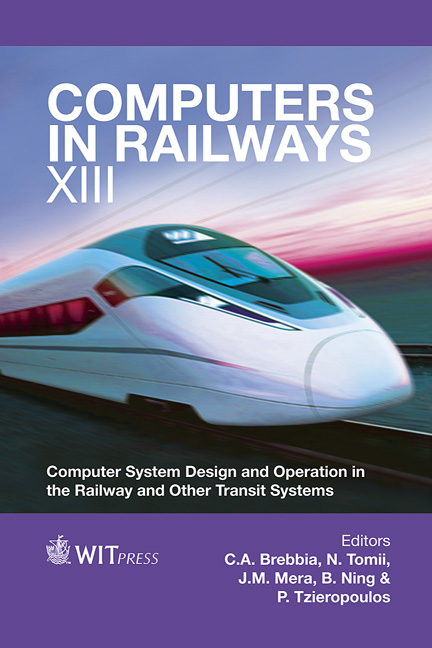An Approach For Optimising Railway Traffic Flow On High Speed Lines With Differing Signalling Systems
Price
Free (open access)
Transaction
Volume
127
Pages
11
Page Range
27 - 37
Published
2012
Size
2,609 kb
Paper DOI
10.2495/CR120031
Copyright
WIT Press
Author(s)
N. Zhao, C. Roberts & S. Hillmansen
Abstract
Signalling systems are critical in ensuring the safe movement of trains within a network. The choice of signalling system employed on a particular line has a direct impact on the journey time and hence the capacity of the line. Computer simulations provide a viable method for evaluating and analysing the performance of signalling systems. This paper describes the development of a multi-train simulator in which five different signalling systems are simulated on a common section of high-speed line operating with two trains. The simulator is used to compare train performance, including differences in journey time and train energy consumption. The result shows that, by using more advanced signalling systems and optimal train control strategies, interactions between trains can be avoided, thereby improving performance. This also has the effect of reducing the energy required to make a particular journey. Keywords: optimal driving strategy, high speed railway; train signalling system, brute force, genetic algorithm, active set.
Keywords
optimal driving strategy, high speed railway; train signalling system, brute force, genetic algorithm, active set





